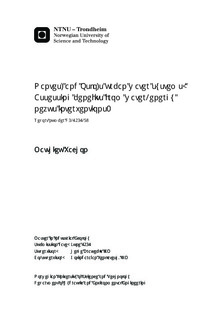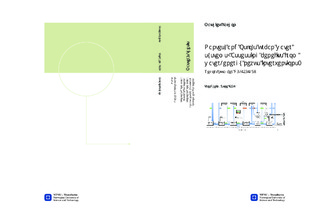| dc.description.abstract | In this thesis is investigated the water-energy nexus, the intricate relation that exists between water use in energy, and energy use in water. Indeed, literature review shows the importance of this relation and the necessity to reduce the impact from the water utility s side, the influence at the heart of this work.To lead such a study, the cases of two cities, Nantes and Oslo have been explored. Oslo is the capital of Norway, inhabited by 560,000 people in 2007, the baseline year for the study. This city benefits from an important economic and demographics dynamics, as it is attractive to both Norwegians from outside Oslo and foreigners. Nantes Métropole is a conurbation of 24 towns around Nantes, the administrative capital of the Region Pays de la Loire in France. Its population of 590,000 in 2010 (baseline year for Nantes) and its position make it an economic and demographic centre.In these two cities, it was possible to develop a model of the urban water cycles systems, associating the identified material, water and energy flows to their energy contents and carbon emissions. Then was investigated the possibility to reduce the footprints of water consumption, a question that was answered by the forecast of future drivers, technologies, and trends.Energy consumption throughout the urban water system is respectively of 116 and 311 kWh/cap.year in Nantes and Oslo. This is far from the total energy used directly and indirectly by individuals in France or Norway. However, such values are by no means unimportant, with 2.19 kWh/m3 final consumption in Nantes versus 1.83 in Oslo. A direct consequence to this opposition is thus that it becomes possible not stop at the total figures per capita and rather split it up, in order to aim for improvement, either on the requirement per unit volume, or on consumption trends. The carbon footprints associated to the consumption of water in Nantes and Oslo can also be viewed as not extremely high with regards to other services, with 25 kg CO2e/cap.year in Nantes and 45.5 kg CO2e/cap.year in Oslo. However, carbon impacts related to the amount of energy used are quite high: 215 g CO2e/kWh for the French utility and 145 g CO2e/kWh for the Norwegian one, equivalent to fossil fuel electricity mixes. Indeed, water cycles depend on indirect energy flows such as chemicals, which rely on fossil resources.The other outcome of this work is based on the water utilities role: not only to produce water but also to clean wastewater. Thanks to policies and technologies, they are able to recover the useful resources: carbon, nitrogen and phosphorus, and the choice of use of these elements can offset a part of the energy used and carbon emitted.Such an element has great importance. Scenarios show that in a few years, up to two thirds of the energy used by the utilities could be offset, and several times their emissions in carbon as well, if the by-products (biogas and sludge) are used properly. In order to make the change effective, the utilities have access to a span of different measures to create impacts. Anaerobic wastewater treatment associated to biogas use as bus fuel, sludge use as fertiliser, are direct ways to offset emissions. Decentralisation of the water supply and rainwater harvesting are also major policy measures that can be implemented to decrease the reliance of UWCS on external resource. | nb_NO |

